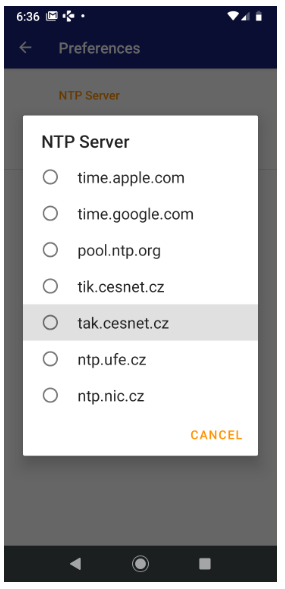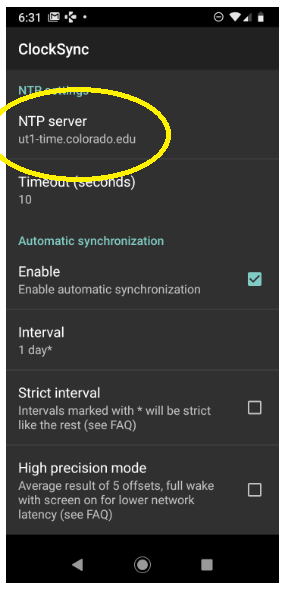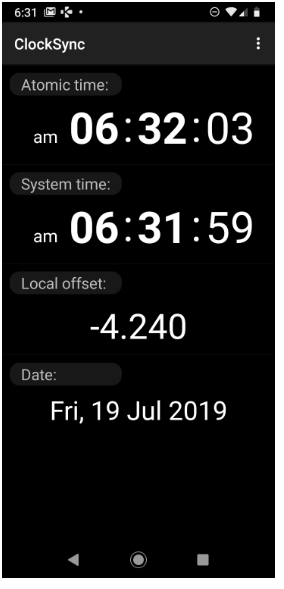Table of Contents
Class Prep
Class 1
Class 2
Class 3
Class 4
Class 5
Class 6
Class 7
Class 8
Class 9
Class 10
>>Topical Articles<<
Assumed Longitude
Bowditch
Bygrave
Casio fx-260 Solar II
Emergency Navigation
Making a Kamal
Noon Sight
Pub. 249 Vol. 1
Sextant Adjustment
Sextant Skills
Sight Averaging
Sight Planning,
Error Ellipses,
& Cocked Hats
Slide Rules
Standard Terminology
Star Chart
The Raft Book
Time
Worksheet Logic
BCOSA.ca
This is a deceptively complicated question to answer. Let's start with some history.
Kepler (1609) We define a day not by how long it takes the earth to spin 360°, but by how long it takes the sun to go from noon-to-noon. Since the earth is moving
around the sun (a 360° journey), 365 days per year, over the space of a day, the earth moves approximately 1° in its path around the sun. So the length of a day is the amount of time it takes the earth to spin 361° around its axis. If the earth circled the sun in a perfectly circular orbit (as Copernicus suggested), we would have a nice, neat approach to day length and time. Johannes Kepler made it clear in a book published in 1609 made it clear that while Copernicus was basically right - the earth DOES revolve about the sun - there is a complication:
the earth's orbit is an ellipse around the sun. So at some times of the year, the earth is closer to the sun, and is moving faster in
its orbit. At other times of the year, the earth is further from the sun, and is moving slower in its orbit. This means that a day length is not consistent. Sometimes
a "day" is the time it takes for the earth to rotate about its axis by slightly more than 361°, and other times a "day" is the time it takes for the earth
to rotate slightly less than 361°. The Invention of Mean Time: 1660 By 1660, pendulum clocks were being made, and it became obvious to all that Kepler was right: some days of the year were slightly longer than other days of the year. The difference was
as much as 16 minutes one way, to 16 minutes the other way. The British Royal Astronomer of the day, and director of the new Greenwich Observatory, developed some tables
in 1670 to allow you to convert between sundial time (which had day lengths that varied) and mean time, which was based on an average length of day across the whole year.
This "mean time" became known eventually as Greenwich Mean Time, and the conversion tool to convert solar time to mean time was known as the Equation of Time.. The Nautical Almanac contains contains, in the lower right corner of each right-hand page, the Equation of Time (shortened to Eqn. of Time) that tells you how much ahead,
or behind, the sun is relative to mean time.
18th & 19th Century
Britain began publishing the Nautical Almanac in the 1700s, using the local solar time (with its variable day length/variable second length) at Greenwich Observatory, in London, as the time standard. John Harrison invented the first workable and reliable marine chronometer in 1761. As the cost of a chronometer came down, the Nautical Almanac was switched over to using Greenwich Mean Time.
20th Century
One consequence of having DAYS of different lengths is that you also have SECONDS of different lengths. Not only that, it became evident that the earth was slowing down, just slightly, in its rotational speed.
So not only was there a second of variable length from month to month - a problem solved by the invention of Greenwich Mean Time - but the average length of a second was slowly changing. This meant that GMT and the Equation of Time had not solved the problem of a variable length of second.
So in 1960, Coordinated Universal Time (abbreviated UTC for "Universal Time Coordinated" - a way of saying this that was a compromise between the English and the French) was introduced. Rather than saying, "There are precisely 86,400 seconds in a day...and if the day becomes longer (because the earth is slowing down), then the second becomes longer" they said, "We are going to define a second as the time needed for a cesium-133 atom to perform 9,192,631,770 complete oscillations."
If you are using the earth as your "clock" (as all humanity did from the beginning until 1960), then this is a clock that loses 2 or 3 seconds every decade. In contrast, a clock based on the oscillation of cesium atoms will only lose one second in 100 million years.
Leap Seconds, and UT1
While scientists and people who worked in telecommunications, finance, power generation and other fields all loved the new UTC second, it caused problems in terms of being properly synched to the rotation of the earth. Up to now, the people of earth have agreed that however nice the UTC second might be, it needs to somehow stay synchronized with the rotation of the earth.
Noon should still be at the precise instant when the sun is highest in the sky.
The solution to this was to - every so often - introduce a leap second, to keep UTC and UT1 synchronized. On average this happens once every couple of years, but can happen as many times as twice a year.
The reason the introduction of leap seconds happens at irregular times is because the reason the earth is slowing down has to do with the friction brought about by the gravity of the moon on the oceans of the earth, i.e. high tide and low tide, and by changes in the distribution of the mass of the earth, e.g. plate tectonics.
Whenever it happens that UTC and GMT get as much as 0.9 seconds apart, the world will introduce a leap second (e.g. everybody agrees that on December 31, at 23:59, that last minute of the day will have 61 seconds rather than 60 seconds.
As a way of making GMT seem more international, it was renamed as UT1.
So while GMT is still used by people, there is a slow transition to talking about UT1 as being mean earth time, which does have a second that will grow in length little by little.
The difference between UTC and UT1 is called DUT1. You will see a reference to this in the last paragraph of page 254 of the Nautical Almanac.
UTC is derived from an average of the results of several atomic clocks around the world. These clocks are corrected to a phenomenal degree...even for their altitude above sea level...since their distance from the center of the earth will influence the strength of gravity at the location of the clock. Gravitational time dilation will cause clocks on mountain tops to tick faster than clocks at sea level. This is an effect predicted by Einstein and confirmed by the keepers of UTC.
Just how they get these clocks to communicate with each other with the degree of accuracy they are obviously achieving is something I do not understand at all.
Time and the Navigator
The Nautical Almanac uses UT1, which they call simply "UT" on the main pages. This can potentially differ from UTC by 0.9 seconds (though as of July 2019, the difference is only 0.1 seconds). An error in time of 1 second would translate into a potential error in your celestial navigation fix of ¼ nm.
Given that we don't normally aim at accuracy greater than 1 nm in our sextant work, an error of ¼ nm just gets lost in the noise of our data. So most navigators are content to use UTC, even knowing that it could introduce a small error in their work.
A GPS watch (which will display time based on UTC) or a timer server on the Internet will deliver a time that is identical to UTC, and within a second of UT1.
If you get a time application for your phone (search for "network time" or "atomic time" in your app store) it will come by default linked to a time server that is delivering time synchronized to UTC. If a time app lets you select only from time servers on a list, then all of them will be synched to UTC. Here is the configuration list from one Android app called "Atomic Clock & Watch Accuracy Tool (with NTP Time)":

On the other hand, if you download an app that lets you manually enter the address of a time server, then you can configure your app to use UT1.

The ClockSync app that Bob has on his Android is of no use at sea, since it requires an Internet connection. But while he is at home on land, at least, he can get UT1 to take his sextant sights with.

You can get a list of American time servers from https://tf.nist.gov/tf-cgi/servers.cgi. If you scroll to the bottom of the page, you will see the (short) list of UT1 servers that are available for you to connect to.

"Rating" Your Watch
If you have a GPS watch, then it automatically synchronizes itself to UTC-based time, and never needs to be rated.
If you have a conventional quartz watch, then it will gain or lose time at some more-or-less consistent rate. By comparing your watch to a time standard - either an "atomic time" app on your phone, or a web site such as https://www.timeanddate.com/worldclock/israel/jerusalem - over the course of a month, you can get a sense of the rate of change for your particular watch.
On my one trip from Hawaii to Canada by sailboat, I had a watch that automatically synchronized with the NIST time signals from the US Government by shortwave radio. This watch stayed within 0.2 seconds of true time always, as long as I was physically located in North America or Hawaii. But a couple of days sailing out from Hawaii left my watch with no usable radio-synch signal...and the watch was on its own.
I had rated my watch before leaving, and I knew that it lost 0.187 seconds per day when left to itself. So when we were 15 days out from the last time my watch did a radio synch with NIST, I could get my watch error for sextant sights by multiplying 15 x 0.187, and determining that my watch was 2.8 seconds slow. So I would apply an error of 3 seconds to all my sextant sights.
EMP and the Uses of a Mechanical WatchThe problem with your quartz (or GPS) watch is that a lightning strike on your mast, such as this one, could fry your electronics with its electro-magnetic pulse (EMP).
The risk of an EMP causing a catastrophic failure of on-board electronics is extremely low. However, the video link in the last paragraph communicates pretty clearly that the risk is greater than zero. So a prudent sailor might decide to take a mechanical watch with him to sea. It need not be expensive. Something like this would be considerably better than nothing.
However, if you choose to bring a mechanical watch on board, you will need to (a) keep it wound, and (b) keep careful records of the time it is keeping on a daily basis.
You ought not reset any timepiece that you are using at sea for navigation. Any time you reset a timepiece, you risk something going wrong and not being able to restart it. Also, you may change the rate at which it gains/loses time. What you are interested in is not so much accuracy as consistency.
Marine chronometers typically were not reset except once every year or two...and even then were taken to a clockmaker for resetting. It doesn't matter how far off your timepiece is from actual UTC. What matters is that you know by how much it is off.
You may need to correlate the rate of gain/loss for your mechanical timepiece with the wind force you noted in your ship's log. The watch will likely run faster if you are sailing in Force 5 winds (17-21 knots with 2-3 meter waves) than if you are in Force 3 winds (7-10 knots with 0.6 to 1.2 meter waves). It is the ability to run at the same rate regardless of sea conditions or outside temperature that distinguished the "marine chronometer" from ordinary timepieces. You will not likely get this sort of consistency in any inexpensive, mechanical watch. So you must keep careful records.